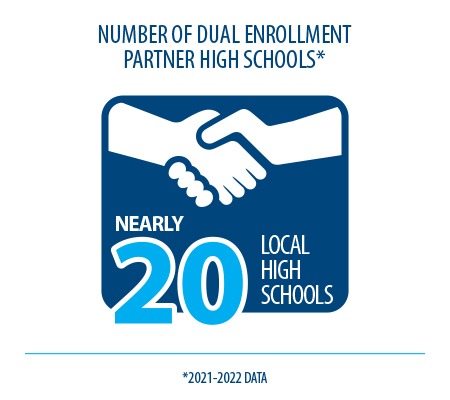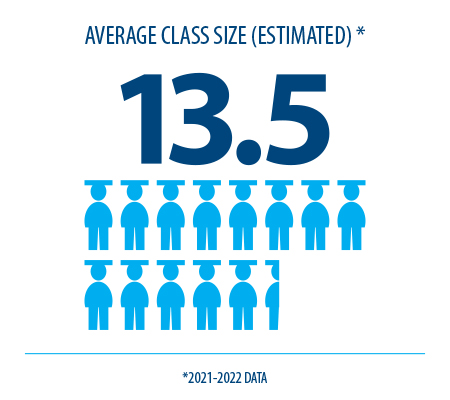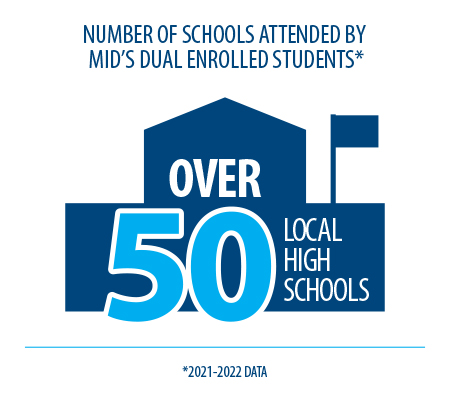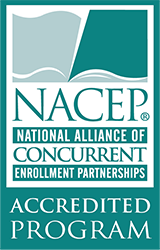
Dual enrollment, taking college courses while still in high school, allows students to get a jump start on their college careers and equips them for college success.
And families save money on college costs, because school districts usually pay the tuition and fees for dual enrollees. Each high school is different in terms of whether it covers most or all of the costs. Check with your guidance counselor to find out how to get started in classes at Mid.
Mid credits go with you, because we participate in many transfer agreements that ensure that our courses count at universities and colleges across the state and country. No matter where you want to end up, Mid courses can be a part of your journey. Our staff can help you select courses that will work for your goals, ensuring that you don't waste credits.
Or join the workforce faster by completing a large portion of one of our career-entry degrees while you're in high school, because our tech/trade and occupational programs allow for career entry in one to two years.
 K-12 Mid Mentor
K-12 Mid Mentor K-12 Mid Mentor
K-12 Mid Mentor






